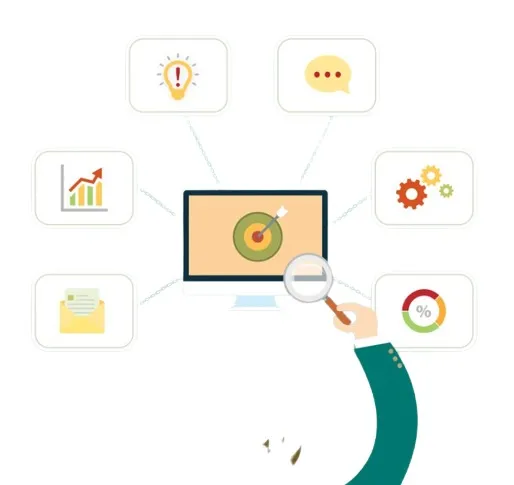The Comprehensive Guide to Managed IT Services: What You Need to Know

In the ever-evolving landscape of business technology, effectively managing IT infrastructure has become a strategic imperative. Enter Managed IT Services, a solution designed to navigate the complexities of technology management. This comprehensive guide aims to delve into the key aspects of Managed IT Services, providing insights into the benefits, components, and considerations that organizations need to know for seamless integration.
1. Understanding Managed IT Services:
Managed IT services, in essence, involve outsourcing certain IT functions to a third-party service provider. This practice goes beyond traditional IT support, encompassing a holistic approach to managing and optimizing an organization’s IT infrastructure. The ultimate goal is to enhance efficiency, reliability, and security while allowing businesses to focus on their core objectives.
2. Benefits of Managed IT Services:
Proactive Maintenance: Managed IT services adopt a proactive approach to IT maintenance, identifying and resolving potential issues before they impact operations.
Cost Efficiency: Outsourcing IT functions can lead to cost savings, as organizations can access advanced technologies and expertise without the need for extensive in-house investments.
Enhanced Security: Managed IT service providers prioritize security measures, implementing robust strategies to protect against cyber threats and data breaches.
Scalability: As businesses grow, managed IT services provide scalable solutions, ensuring that IT infrastructure aligns with evolving organizational needs.
3. Components of Managed IT Services:
24/7 Monitoring and Support: Managed IT services include continuous monitoring of IT systems to detect and address issues promptly. This is complemented by round-the-clock support to ensure uninterrupted operations.
Network Management: Effective management of networks, including configuration, optimization, and troubleshooting, is a core component of managed IT services.
Data Backup and Recovery: Managed IT services encompass comprehensive data backup and recovery solutions, safeguarding critical information from loss or damage.
Cybersecurity: Protection against cyber threats is a fundamental aspect of managed IT services. This includes antivirus measures, firewalls, and ongoing security updates.
Cloud Services: Managed IT services often incorporate cloud solutions, facilitating the efficient storage, access, and management of data and applications in the cloud.
4. IT Support and Services:
Responsive Help Desk Support: Managed IT services typically include a responsive help desk to address user queries and resolve issues promptly.
Onsite Support when Needed: In addition to remote support, managed IT services may offer onsite assistance for more complex issues or projects.
User Training and Education: Managed IT service providers often provide user training and education to enhance the overall IT literacy of an organization’s staff.
5. Selecting the Right IT Service Provider:
Industry Experience: Choose a managed IT service provider with experience in your industry, as they will better understand the specific challenges and requirements of your business.
Scalability of Services: Ensure that the managed IT service provider can scale their services to accommodate the growth and changing needs of your organization.
Security Measures: Assess the security protocols and measures implemented by the service provider to safeguard your sensitive data and ensure compliance with regulations.
6. Considerations for Implementation:
Alignment with Business Goals: The implementation of managed IT services should align with the overall business goals and objectives of the organization.
Service Level Agreements (SLAs): Clearly define service level agreements, outlining the expectations, responsibilities, and performance metrics agreed upon with the service provider.
Regular Evaluation: Regularly evaluate the effectiveness of managed IT services in meeting organizational objectives, and be open to adjustments or improvements as needed.
7. The Evolving Landscape of Managed IT Services:
Emerging Technologies: Managed IT services continuously evolve to incorporate emerging technologies such as artificial intelligence, machine learning, and automation to enhance efficiency and innovation.
Remote Work Considerations: The shift towards remote work has influenced managed IT services, emphasizing the importance of secure and efficient remote access, collaboration tools, and support for distributed teams.
8. The Future of Managed IT Services:
As technology continues to advance at a rapid pace, the future of Managed IT Services holds exciting possibilities. Emerging trends such as edge computing, quantum computing, and further integration of AI are poised to reshape the IT services landscape. Managed service providers are expected to play a pivotal role in helping organizations navigate and leverage these innovations to stay competitive.
Conclusion:
Managed IT services play a pivotal role in modernizing and optimizing IT infrastructure for businesses of all sizes. By understanding the benefits, components, and considerations associated with managed IT services, organizations can make informed decisions that align with their strategic objectives. As technology continues to advance, the partnership with a reliable managed IT service provider becomes increasingly valuable for sustaining competitiveness and achieving long-term success.
In conclusion, the integration of Managed IT Services represents not just a technological upgrade but a strategic shift towards a more efficient, secure, and future-ready IT infrastructure.
1. Understanding Managed IT Services:
Managed IT services, in essence, involve outsourcing certain IT functions to a third-party service provider. This practice goes beyond traditional IT support, encompassing a holistic approach to managing and optimizing an organization’s IT infrastructure. The ultimate goal is to enhance efficiency, reliability, and security while allowing businesses to focus on their core objectives.
2. Benefits of Managed IT Services:
Proactive Maintenance: Managed IT services adopt a proactive approach to IT maintenance, identifying and resolving potential issues before they impact operations.
Cost Efficiency: Outsourcing IT functions can lead to cost savings, as organizations can access advanced technologies and expertise without the need for extensive in-house investments.
Enhanced Security: Managed IT service providers prioritize security measures, implementing robust strategies to protect against cyber threats and data breaches.
Scalability: As businesses grow, managed IT services provide scalable solutions, ensuring that IT infrastructure aligns with evolving organizational needs.
3. Components of Managed IT Services:
24/7 Monitoring and Support: Managed IT services include continuous monitoring of IT systems to detect and address issues promptly. This is complemented by round-the-clock support to ensure uninterrupted operations.
Network Management: Effective management of networks, including configuration, optimization, and troubleshooting, is a core component of managed IT services.
Data Backup and Recovery: Managed IT services encompass comprehensive data backup and recovery solutions, safeguarding critical information from loss or damage.
Cybersecurity: Protection against cyber threats is a fundamental aspect of managed IT services. This includes antivirus measures, firewalls, and ongoing security updates.
Cloud Services: Managed IT services often incorporate cloud solutions, facilitating the efficient storage, access, and management of data and applications in the cloud.
4. IT Support and Services:
Responsive Help Desk Support: Managed IT services typically include a responsive help desk to address user queries and resolve issues promptly.
Onsite Support when Needed: In addition to remote support, managed IT services may offer onsite assistance for more complex issues or projects.
User Training and Education: Managed IT service providers often provide user training and education to enhance the overall IT literacy of an organization’s staff.
5. Selecting the Right IT Service Provider:
Industry Experience: Choose a managed IT service provider with experience in your industry, as they will better understand the specific challenges and requirements of your business.
Scalability of Services: Ensure that the managed IT service provider can scale their services to accommodate the growth and changing needs of your organization.
Security Measures: Assess the security protocols and measures implemented by the service provider to safeguard your sensitive data and ensure compliance with regulations.
6. Considerations for Implementation:
Alignment with Business Goals: The implementation of managed IT services should align with the overall business goals and objectives of the organization.
Service Level Agreements (SLAs): Clearly define service level agreements, outlining the expectations, responsibilities, and performance metrics agreed upon with the service provider.
Regular Evaluation: Regularly evaluate the effectiveness of managed IT services in meeting organizational objectives, and be open to adjustments or improvements as needed.
7. The Evolving Landscape of Managed IT Services:
Emerging Technologies: Managed IT services continuously evolve to incorporate emerging technologies such as artificial intelligence, machine learning, and automation to enhance efficiency and innovation.
Remote Work Considerations: The shift towards remote work has influenced managed IT services, emphasizing the importance of secure and efficient remote access, collaboration tools, and support for distributed teams.
8. The Future of Managed IT Services:
As technology continues to advance at a rapid pace, the future of Managed IT Services holds exciting possibilities. Emerging trends such as edge computing, quantum computing, and further integration of AI are poised to reshape the IT services landscape. Managed service providers are expected to play a pivotal role in helping organizations navigate and leverage these innovations to stay competitive.
Conclusion:
Managed IT services play a pivotal role in modernizing and optimizing IT infrastructure for businesses of all sizes. By understanding the benefits, components, and considerations associated with managed IT services, organizations can make informed decisions that align with their strategic objectives. As technology continues to advance, the partnership with a reliable managed IT service provider becomes increasingly valuable for sustaining competitiveness and achieving long-term success.
In conclusion, the integration of Managed IT Services represents not just a technological upgrade but a strategic shift towards a more efficient, secure, and future-ready IT infrastructure.



